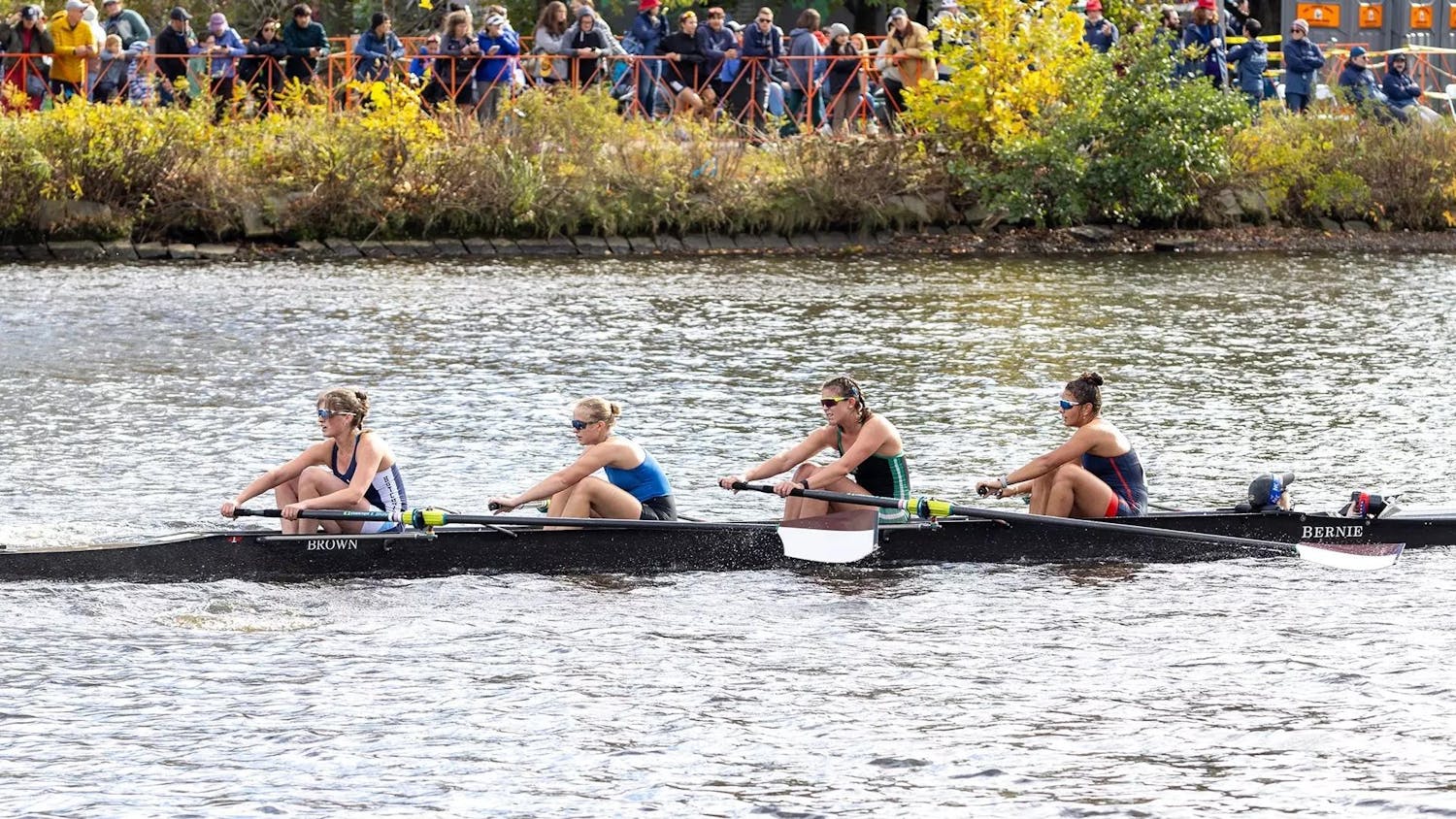Two weeks after losing their varsity status, over 100 former student-athletes now face a once-unfathomable choice: stay at Brown or continue their athletic careers at a different institution.
President Christina Paxson P’19 announced June 9 that the men’s track, field and cross country teams would have their varsity status reinstated, eliminating the consideration of transfer for athletes from those teams. But student-athletes from the other eight teams will remain at the club level, and some are considering leaving the University where they've made friends and significant progress on their degrees.
The decision, according to four athletes, relies on a number of factors, including the effect of COVID-19 on the upcoming season, how many years of eligibility a student-athlete has left at the University and the landscape of their sport nationwide.
For Lauren Reischer ’21, an incoming co-captain of the equestrian team approaching her senior year, leaving the University with one year to go makes little sense, she said.
“I definitely wouldn’t be transferring because of riding, and it definitely would not have made sense to transfer academically,” she said. “I’ve loved every single day I’ve spent at Brown.”
Schools in the South and West — such as Auburn University, Oklahoma State University, and the University of Georgia — dominate the college equestrian world, Reischer said, which adds yet another layer of complexity to the prospect of transferring from Brown.
Only 17 Division I schools maintain varsity equestrian teams, with Cornell maintaining the only other varsity team in the Ivy League, according to the National College Equestrian Association’s website.
“I don’t think anyone on the equestrian team will transfer, personally,” Reischer said. “It would be a very big transition to go from Brown to (the University of) Georgia.”
Andrew Zimbalist P’00 ’20, an economist at Smith College and an expert on NCAA athletics, said he expected a small number of student-athletes to transfer in response to the decision — a “trickle,” but not a “flood.”
“The sports that are being cut are not sports somebody who’s at Brown would expect to play professionally,” he said in an interview with The Herald. “The downgrade from varsity to club isn’t all that dramatic.”
Zimbalist also anticipates that student-athletes may prioritize the value of a Brown degree over the ability to play their sport at the varsity level. “Why would somebody, if they can continue to play their sport on a club level, leave Brown?” he said.
Athletically-motivated transfers, Zimbalist noted, are a rarity in the Ivy League: Typically, such transfers may be prompted by an issue with a coach or personal or familial commitments, he added.
Still, some athletes are weighing their options. As of June 6 — prior to the reinstatement of men's track, field and cross country — 18 University student-athletes had entered the NCAA’s transfer portal, allowing other college coaches to contact them, according to the Compliance Office, which oversees transfer eligibility requirements within the Athletic Department. Additionally, because the NCAA does not govern men’s and women’s squash, the department gave both teams a “blanket ‘permission to contact letter’” allowing athletes to correspond with other coaches.
Entering the portal does not guarantee that a student-athlete will transfer. After going through a recruiting process, student-athletes then apply for admission at a new institution and, if accepted, can transfer.
The University offered four Zoom calls with academic deans and eligibility officers from the Athletics Department in the days following the announcement of the varsity cuts: two for incoming students, and two for returning students, the Compliance Office wrote in an email to The Herald.
Students who requested follow-up discussions have also met with the Compliance Office “one-on-one” over Zoom, according to the email.
In an interview with The Herald, Director of Athletics Jack Hayes said he expects to have a clearer picture of transfer numbers in “the next couple weeks.”
“I certainly hope that students remain at Brown,” he added.
“We’re prepared to do a greater volume (of transfers) based on the recent (Excellence in Brown Athletics Initiative),” said Deputy Dean of the College Christopher Dennis, who helps students with the academic portion of outbound transfers. “So far it hasn’t materialized — but we’ll be prepared to meet demand.”
Luca Jezzeny ’23 and Pinya Pipatjarasgit ’22, both members of the recently demoted men’s and women’s golf teams, said they were both reluctantly exploring the potential of transferring — so long as their transfer destination could match Brown’s academic rigor.
Shortly after receiving the news about the golf team, Jezzeny said he began to consider the “sad idea” of transferring.
“I knew I wanted to continue to pursue golf at the Division I level,” he said. “I figured I should at least look to see if there were opportunities, based on how much I’ve worked at golf.”
Jezzeny said he had begun working with his coach to look at teams that could be a “good fit academically and athletically.”
“The goal would be to go to another Ivy League (school) with a golf program, because I want to come out with an Ivy League degree,” Pipatjarasgit said. As of early June, she had put her name in the transfer portal to talk to other coaches whom she had encountered in the recruiting process in high school.
But with transfer deadlines passed, along with low acceptance rates and an uncertain season ahead due to the COVID-19 pandemic, Pipatjarasgit admitted that the process could be “very hard” as she enters the second half of her college career.
“The worst part of this whole situation is how much I love Brown,” Pipatjarasgit said. “I feel like I found such a home.”
For currently enrolled students, the open curriculum also presents a unique hurdle in transferring and is “one of the number one flags that I put out there for students to look at,” Dennis said. “If you’re considering transferring from Brown, you definitely want to talk to your admissions officer from your target institutions.” Distribution requirements, absent within the open curriculum, “can be a third of your course requirements” at another institution, he noted.

Will Kubzansky is the 133rd editor-in-chief and president of the Brown Daily Herald. Previously, he served as a University News editor overseeing the admission & financial aid and staff & student labor beats. In his free time, he plays the guitar and soccer — both poorly.





